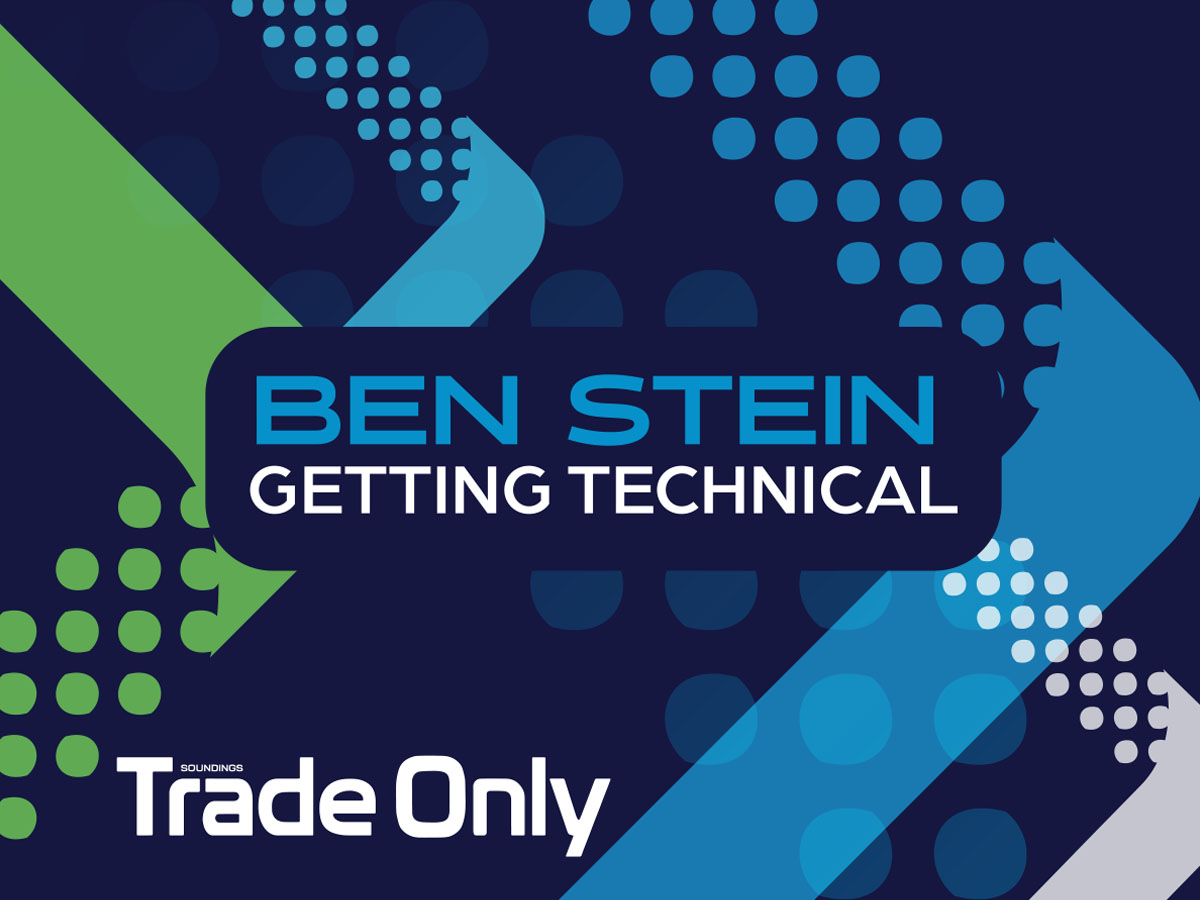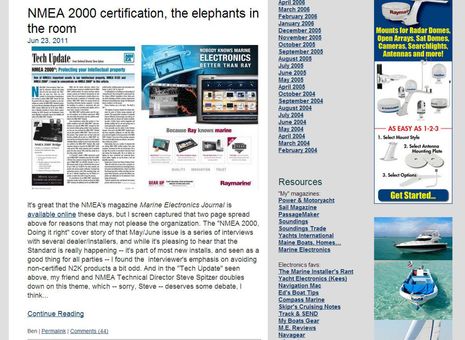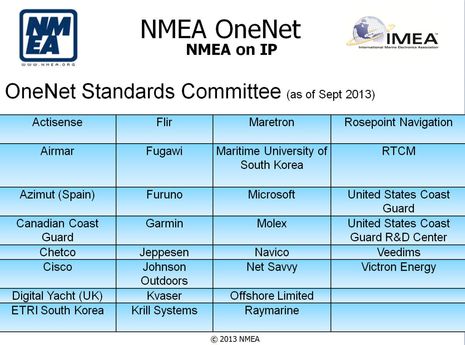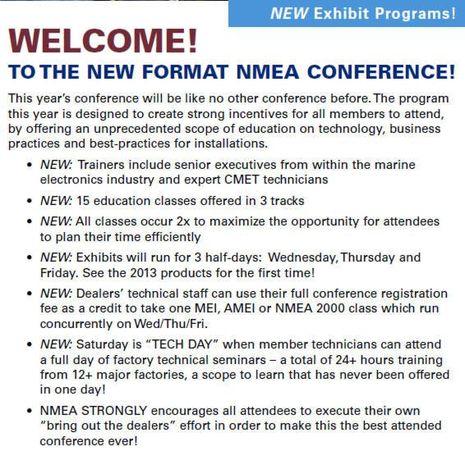Getting Technical: Standard upgrade

Editor’s Note: This column originally appeared in the May issue of Soundings Trade Only as part of my Getting Technical monthly column. covering all things technology. I welcome all feedback on these pieces. Feel free to let me know when you think I’m wrong. I welcome the feedback! Ben S.
The NMEA’s OneNet can offer a lot of benefits for boaters, if manufacturers choose to embrace it.
NMEA OneNet is the National Marine Electronics Association’s most recent standard, one of only three major electronics standards the organization has released in the past 40-plus years. First came NMEA 0183 in 1983, then NMEA 2000 in 2001, and now OneNet. The previous standards stood the test of time. In fact, despite being 41 years old, NMEA 0183 continues to be built into many electronics and remains the preferred standard for many light commercial vessels.
NMEA 2000 delivered on the NMEA’s promise of a single network carrying critical navigation data such as position, depth and environmental conditions. In the 23 years since its introduction, NMEA 2000 has gained tremendous adoption and been extended to carry even more data. Today, an NMEA 2000 network might carry navigation information, engine gauge data, nearby AIS targets, digital switching status and control messages, and enable control of a boat’s climate-control systems.
Why a New Standard?
NMEA 2000 advanced interoperability and integration of electronics, but it’s also starting to show its limits. An NMEA 2000 network supports a maximum of 50 physical devices. However, network performance can begin to degrade before the 50-device limit is hit. When NMEA 2000 was being developed, 50 devices seemed sublime. Today, it’s easy to envision very large networks.
NMEA 2000 introduced the electronics world to controller area network (CAN bus) as a means of transferring information all over the boat. This standard, developed for automotive networks, transfers relatively limited information over the network. With 250 kilobits per second of throughput, it’s appropriate for numeric data and some text, such as AIS messages with vessel information. But NMEA 2000 can’t support higher-bandwidth services such as radar, graphical sonar displays and video.
And it has become clear that security must also be considered. The networks that run our boats, cars and houses must be robust and resistant to uninvited access. NMEA 2000’s only security comes from physical access. So if you can physically access the network, you can access all the information on it.
OneNet: The New Standard
NMEA’s OneNet appears to deliver on today’s needs while being designed to age well. Based on Ethernet, OneNet addresses the scalability and throughput limitations of NMEA 2000, and lays a secure framework to ensure safety and security.
OneNet operates on Ethernet networks ranging from 100 megabits per second to 10 gigabits per second. That’s 400 to 40,000 times faster than NMEA 2000. Utilizing TCP/IP’s IPv6 for IP addressing effectively removes any limit on the number of devices.
An NMEA 2000 network is limited to 3 amps at 12 volts or 36 watts. OneNet utilizes the power-over-ethernet standard to support up to 25.5 watts to each device on the network. OneNet also defines security standards for the entire network. The details are complex, but physically accessing the network simply won’t be enough to gain access to it and the information it carries. Devices will need to be admitted to the network before they can participate.
When NMEA 2000 replaced 0183, there wasn’t a migration path or compatibility. OneNet takes a different approach.
This network is designed with the concept of built-in gateways. Those gateways allow interoperability with NMEA 2000 or 0183, and allow data from those networks to be transported over the OneNet network.
Because of its vastly improved bandwidth, power delivery and network size, OneNet can carry much more and many more types of data. Where NMEA 2000 is limited to numerical and textual data, OneNet can carry the most graphically intensive data available on a boat.
The data carried, in addition to the familiar workloads from NMEA 2000, include radar, sonar, video and nearly anything else developers can dream up. Plus, by defining standard ways of exchanging information, OneNet can enable sharing sensor output across brands. So if two companies decide to develop and support it, a Raymarine screen might be able to display and control a Simrad radar.
It Won’t Happen Overnight
Rolling out and driving adoption of a new standard isn’t easy. OneNet’s road is likely to be a little more difficult than NMEA 2000’s. OneNet dictates specific connectors to meet the standard. In areas exposed to weather, an M12 X-coded connector must be used on the device. (Devices installed in enclosed environments can use a standard RJ45 connector.) Manufacturers that have been using proprietary connectors for a decade or more might be hesitant to make a switch. And to boat owners and operators, the promise of interoperability between brands may be enticing, but electronics manufacturers might not be as excited.
I think gateways from OneNet to NMEA 2000 and NMEA 0183 will be some of the first products we see. Larger NMEA 2000 systems can suffer performance problems. Today’s remedy is to separate networks into smaller segments, but segmenting networks limits what data is available on various displays. A gateway that allows sharing the data would be an improvement.
Today, many third-party integrations require separate development for each electronics manufacturer’s products. So for a stabilizer control system, lighting controller or night vision camera to be viewable on multifunction displays, separate development is required for each platform. That means if Seakeeper wants its users to be able to control gyros from a multifunction display, Seakeeper must go through the development effort for Garmin, Furuno, Raymarine and Navico. On the other hand, if each of the displays supports OneNet integrations, Seakeeper will only have to develop one app.
Long-Term Success
The new standard’s long-term success will ultimately come down to adoption. For OneNet to deliver on the promise of being one network for all the boat’s needs, individual components and systems on the boat need to implement it. As consumer awareness of OneNet increases, demand should help drive OneNet implementation throughout the market.
The NMEA is working on a program to encourage individual developers to embrace OneNet. That program will reduce the initial expense by making a development environment, certification tool and access to the standard available as a monthly subscription. Overall, the organization takes a long view as it develops and implements standards. It may take a while, but I think the entire industry stands to benefit from OneNet’s success.













Ben-
I’ve heard about the eventual evolution to Ethernet based data transfer on boats for some time. Raymarine has been using “Raynet” – with standard Ethernet Switches for many years now. I believe that all of the “big 4” have already converted all Radar, high resolution video cameras and likely Sonar data to Ethernet based schemes. Conversion is already underway to use PoE for cameras and other kit that can readily use PoE. Even Starlink “New Standard” uses PoE to simplify installation in a home, RV or boat.
The biggest difference between OneNet and existing Ethernet buses in place today (Raynet being just one), is the widespread adoption of PoE with PoE capable switches and the adoption of Security standards for data transfer and acceptance of new devices added to the network. I’m sure the other issue will be connectors! Man is that a hassle. The trend is for companies to start dropping proprietary NMEA 2000 connectors and allow 2000 standard cables to be used on MFD and other devices.
Part of the time frame that will be needed to finally move the industry to OneNet is replacement of very old MFD and other kit that remains basically functional for many boat owners. So many folks are using MFDs and other gear that is at least 10-15 years old that it will be a while before demand for the new OneNet gear is significant. Adoption on new builds of course will be good but those are outliers by comparison with the installed base of a couple million vessels out there already. Especially since the investment in MFDs is very high and is a barrier to rapid transition to any new standard.
Great article Ben – to date, has any manufacturer received the full OneNet certification?
To the best of my knowledge, there are not currently any certified OneNet products. I’m told a couple are very close. I’m also hopeful this will be like popping popcorn. The first kernels take a long time but then things start happening rapidly and all at once.
-Ben S.
I would like to upgrade from my Garmin 942xs, but everytime I go to check prices I get outraged and put it off again. I made a very functional raspberry pi plotter that gets all the nmea2000 data on the boat for a couple hundred bucks, why would I pay $1500 for a plotter with almost no extra functionality? Hoping there is more development in the open source area!
Yike, I wrote about NMEA “finally” creating OneNet in 2012… https://panbo.com/onenet-nmea-finally-creates-a-marine-ethernet-standard/ …and thought it would be “ahead of the curve” a year later: https://panbo.com/nmea-onenet-2013-already-ahead-of-the-curve/
There are many interesting and sometimes argumentative comments on those posts, so I’m not the only marine electronics enthusiast who did not realize that OneNet would take so long to actually materialize 😉
Hi Ben E! Yes – and how long will it be before OneNet is actually useful (by being able to purchase enough equipment that uses it to make a sensible install)? The marine market is NOT large – and brand new stuff that doesn’t provide anything besides breaking the “proprietary” boundary would seem to be a tough sell.
NMEA 2000 is useful these days because one can buy equipment to use with it that does useful things – even if there are two connector standards (SeaTalkNG & everything else 🙁 ) It also removes the headaches of devising the “talkers” and “listeners” interconnections that make NMEA 0183 such a hassle.
A side note – Atsa is in Linekin Bay with Lesley while I get knee work done here in FL – we should be back afloat and on the move by August so we may pay y’all a visit up there in Camden-towne!
Hartley
S/V Atsa
Hi Hartley, I’ve been keeping on eye on Atsa and looking forward to seeing you both. But Marine Traffic doesn’t yet track personal surgery flights to FL, so that’s an old guy surprise I wish you good luck with.
5 trap lobstering is surprisingly good in Camden Harbor this season, so far, while big Gizmo has mostly been a floating project boat as I prepare to pass her along to someone who can enjoy her more. Yes, she’s going on the market soon and this is the first I’ve mentioned it on Panbo, though not the last!
Wow – I know that had to be a hard decision for you with all the fun you’ve had with her. I noticed today that the battery was slipping lower in SOC and wondered. No surgery yet – just some tests – but it will be surgery (both knees) this winter. Hopefully I will be more ambulatory next year 🙂
Hartley
S/V Atsa